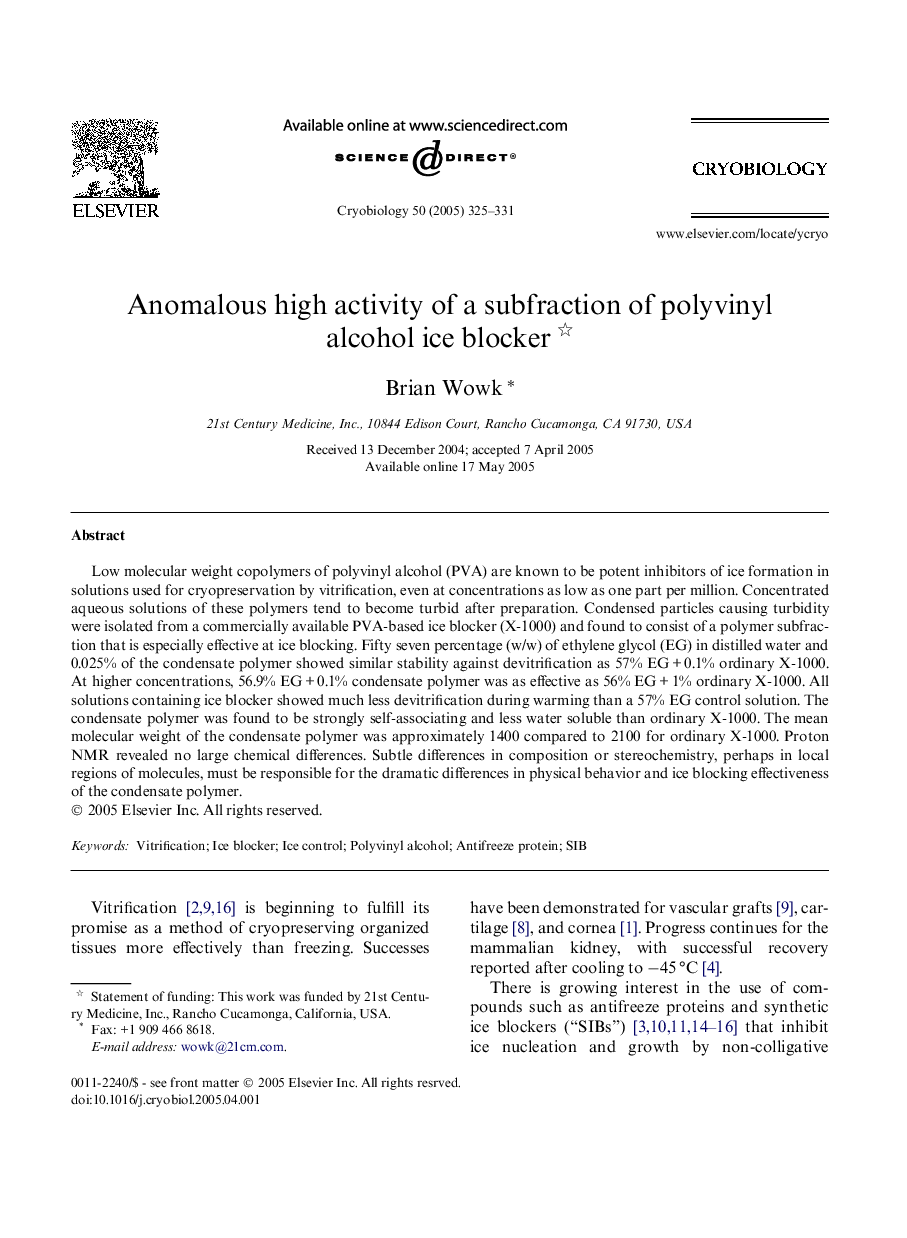| Article ID | Journal | Published Year | Pages | File Type |
|---|---|---|---|---|
| 9912198 | Cryobiology | 2005 | 7 Pages |
Abstract
Low molecular weight copolymers of polyvinyl alcohol (PVA) are known to be potent inhibitors of ice formation in solutions used for cryopreservation by vitrification, even at concentrations as low as one part per million. Concentrated aqueous solutions of these polymers tend to become turbid after preparation. Condensed particles causing turbidity were isolated from a commercially available PVA-based ice blocker (X-1000) and found to consist of a polymer subfraction that is especially effective at ice blocking. Fifty seven percentage (w/w) of ethylene glycol (EG) in distilled water and 0.025% of the condensate polymer showed similar stability against devitrification as 57% EGÂ +Â 0.1% ordinary X-1000. At higher concentrations, 56.9% EGÂ +Â 0.1% condensate polymer was as effective as 56% EGÂ +Â 1% ordinary X-1000. All solutions containing ice blocker showed much less devitrification during warming than a 57% EG control solution. The condensate polymer was found to be strongly self-associating and less water soluble than ordinary X-1000. The mean molecular weight of the condensate polymer was approximately 1400 compared to 2100 for ordinary X-1000. Proton NMR revealed no large chemical differences. Subtle differences in composition or stereochemistry, perhaps in local regions of molecules, must be responsible for the dramatic differences in physical behavior and ice blocking effectiveness of the condensate polymer.
Related Topics
Life Sciences
Agricultural and Biological Sciences
Agricultural and Biological Sciences (General)
Authors
Brian Wowk,
